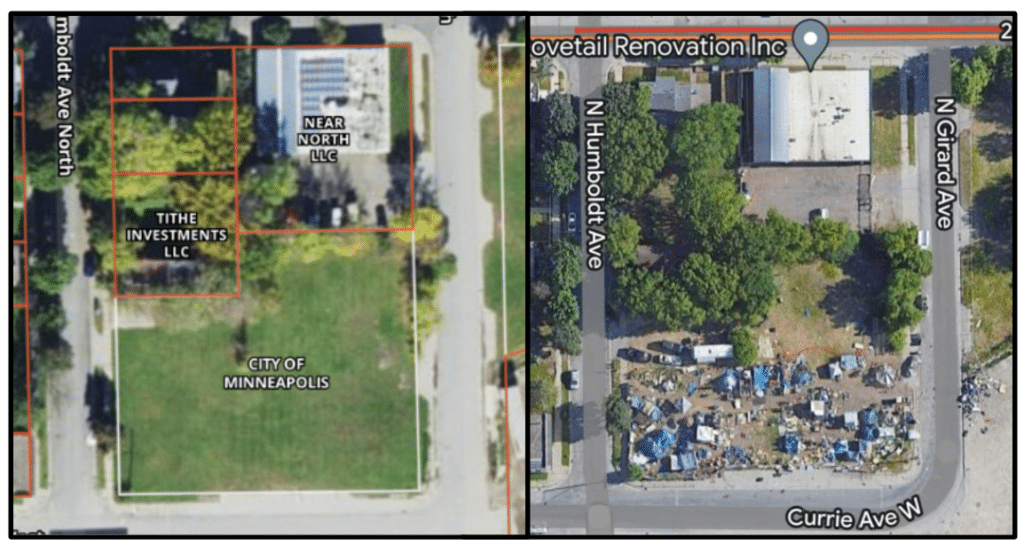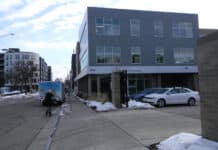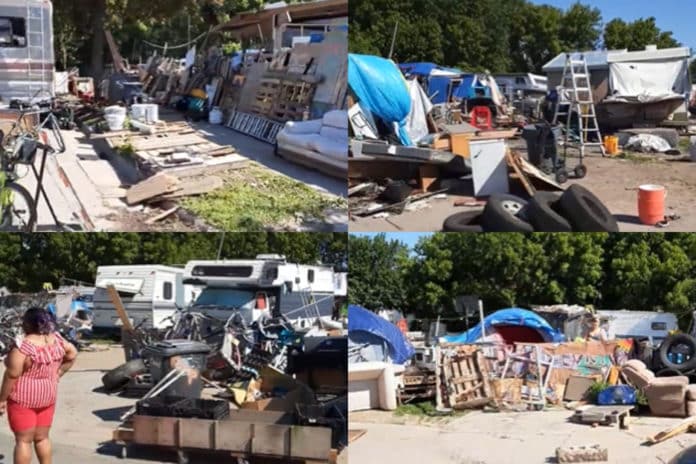A shocking on-the-ground video shows a block-long shantytown slum less than a mile from central Minneapolis.
The footage, uploaded to Twitter by Bill Glahn, captures a makeshift village of homeless Minnesotans near the intersection of Currie and Humboldt avenues. The encampment is less than a mile from Target Field, a farmers market, the University of St. Thomas, the Minneapolis Sculpture Garden and a host of other Twin Cities mainstays on the west side of downtown.
A wall of pallets, tires, plywood and trash apparently designed to keep the area free of outsiders and sheltered from onlookers surrounds the encampment.
Driving by a homeless encampment in Minneapolis with @47Davidzimmer yesterday. pic.twitter.com/zXBBqRUpm9
— Bill Glahn (@billglahn) June 3, 2022
Over two dozen tents are visible on a recent Google Maps capture of the site. Glahn’s video also shows a collection of RVs and other vehicles that are apparently inhabited. A previous satellite view of the area shows it was once an uninhabited green space owned by the city.

This is far from the only homeless encampment in the Twin Cities. Rather, there are several collections of tents and unhoused people around the metro area. City leadership has played a cat-and-mouse game with the camps, periodically evicting them, only to see new ones pop up elsewhere.
As the economy continues to worsen and home ownership becomes increasingly out of reach for young people, Minneapolis and other cities will likely see more homeless towns like this one. The gap between the price of a home and the median wage has never been greater. Presently, the home price to median income ratio is 7.90 — higher than it was even during the Great Depression when new homes cost $3,900 and median wages were just over $1,700 per year (a ratio of 2.3).
Compounding the severity of the situation is the dwindling pool of money that has been barely supporting existing anti-homeless efforts. During the COVID-19 pandemic, housing programs enjoyed a historic level of funding. Minnesota’s rental assistance program RentHelpMN alone allocated over $445 million trying to keep struggling renters in their homes. However, legislators point out that programs like these are not viable, long-term solutions. The state simply cannot afford to subsidize large amounts of rent once COVID-related federal assistance expires, they warn.
Local homeless shelters constructed in response to the economic downturn associated with COVID lockdowns are also in financial jeopardy as public funding runs out.
Meanwhile, Minneapolis Mayor Frey believes his city is trending upwards. “I’ll keep saying it, MPLS is coming back!” he tweeted from a recent event geared towards high-class patrons.

















